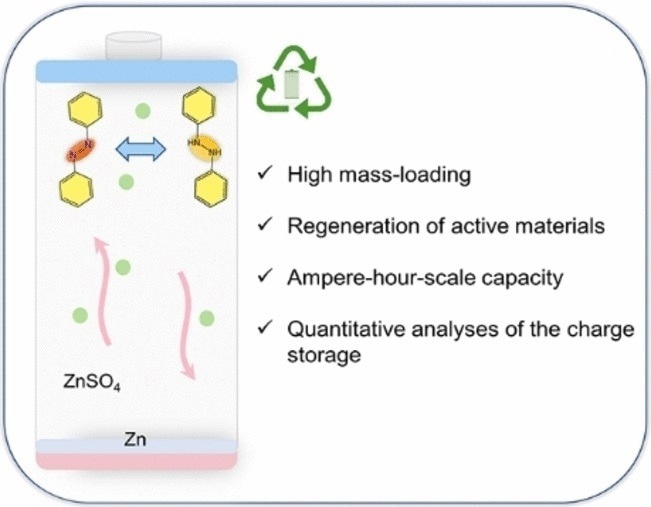The current rechargeable batteries, such as lithium-ion batteries, are far from environmentally friendly. One option is organic batteries with redox-organic electrode materials (OEMs), which can be manufactured from natural “green” materials.

Image Credit: Angewandte Chemie.
A Chinese team has published a novel OEM for aqueous organic high-capacity batteries that can be readily and affordably recycled. Its results were published in the journal Angewandte Chemie.
Conventional inorganic electrode materials in commercial batteries provide various issues, including limited resources, environmental issues, hazardous components, partially undesirable mining conditions, recycling difficulties, restricted capacity, and high costs. Based on these electrodes, no large-scale sustainable batteries can be built, even though they are required for an energy transition.
Organic batteries with OEMs are still in the early stages of their long journey to practical implementation. A Huazhong University of Science and Technology team headed by Chengliang Wang has now accomplished a substantial stride in this approach. The idea is to use OEMs in aqueous electrolyte batteries. These are “greener,” more environmentally friendly, and less expensive than traditional organic electrolytes in lithium-ion batteries.
The researchers selected azobenzene, a substance that is insoluble in water but highly soluble in organic solvents and can be synthesized affordably on a wide scale. Unlike most other functional groups, this molecule's azo group (–N=N–) can reversibly transfer two electrons, which adds to its high capacity.
Extensive experiments demonstrated that azobenzene is changed to hydroazobenzene during the discharge process after absorbing two electrons—via the quick, reversible binding of two protons (H+). Prototype coin cells and laminated pouch cells of differing sizes with azobenzene OEMs and zinc counter-electrodes achieved ampere-hour capacities maintained over 200 charge/discharge cycles.
Unlike polymeric OEMs, small azobenzene molecules can be recycled economically through a simple extraction using available organic solvents. The electrode material is air stable in both its charged and discharged states and can be recycled in all states of charge with yields above 90%. The recycled items could be utilized as OEMs with no capacity loss.
Journal Reference
Chen, Y., et al. (2023). A Recyclable and Scalable High‐Capacity Organic Battery. Angewandte Chemie. doi.org/10.1002/anie.202302539.